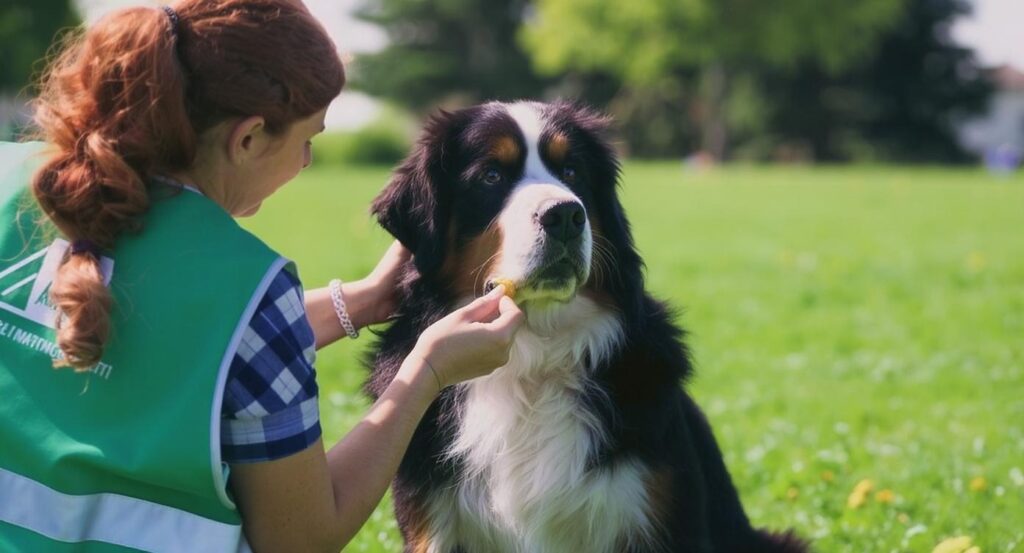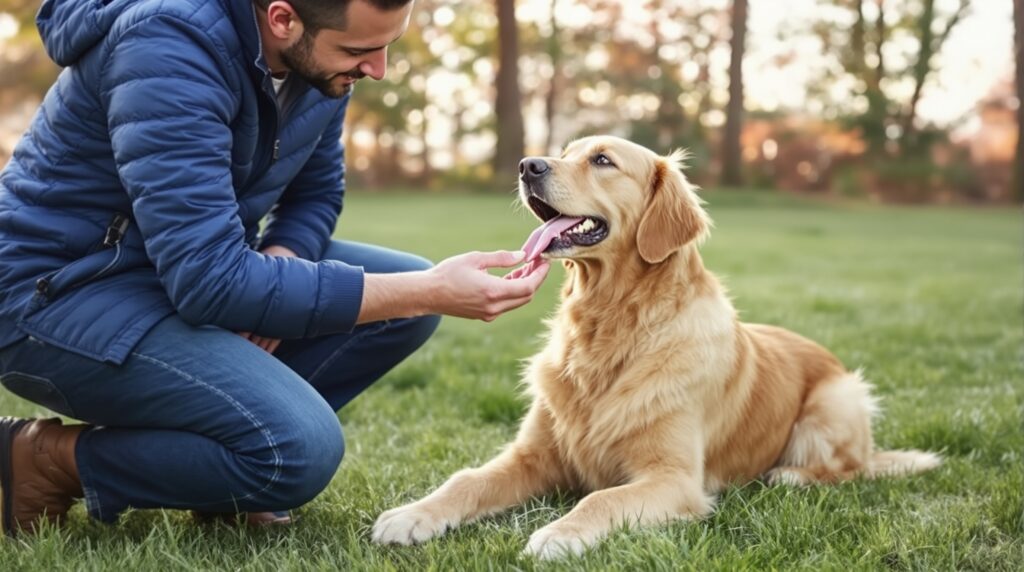Building confidence in your Bernese Mountain Dog takes patience, consistency, and a gentle touch. These gentle giants sometimes get a bit unsure in new situations, but with the right support, they can grow into calm and secure companions.
When you focus on confidence, you help your Berner feel comfortable and capable. That’s how they learn to handle everyday life without so much worry.
You’ll find simple ways to guide your dog through socialization, training, and play. These steps fit naturally into your routine.
Each step builds on the last. Your Berner gets the tools to feel safe and self-assured at home, around people, and out in the world.
Start socializing early with other dogs and people to build comfort in new situations
When you bring your Bernese Mountain Dog into new settings, start slow. Early socializing helps your dog get used to different sights, sounds, and smells without feeling stressed.
Introduce your pup to calm, friendly dogs first. Short play sessions let them learn good manners and build confidence around other animals.
Meeting people matters just as much. Invite friends or family to greet your dog calmly so they can practice being around new faces.
Keep things positive with treats, praise, and patience. This way, your dog connects new situations with good outcomes.
If your Bernese seems nervous, take a step back and slow down. Forcing too much too quickly can make them uneasy.
Mix in variety early on. Even short walks in different neighborhoods can make a big difference.
Use positive reinforcement like treats and praise to encourage confident behavior
When your Bernese Mountain Dog shows calm or brave behavior, reward it right away. A small treat or a cheerful “good job” helps your dog connect the action with something positive.
Praise works just as well as food if you use the right tone. Dogs notice your voice and body language, so keep it upbeat and relaxed.
Keep rewards simple and consistent. Offer a treat when your dog tries something new, like walking past a noisy area or meeting a stranger.
You don’t need big rewards every time. Sometimes a pat, a smile, or a favorite toy says enough.
Introduce new environments gradually to avoid overwhelming your Berner
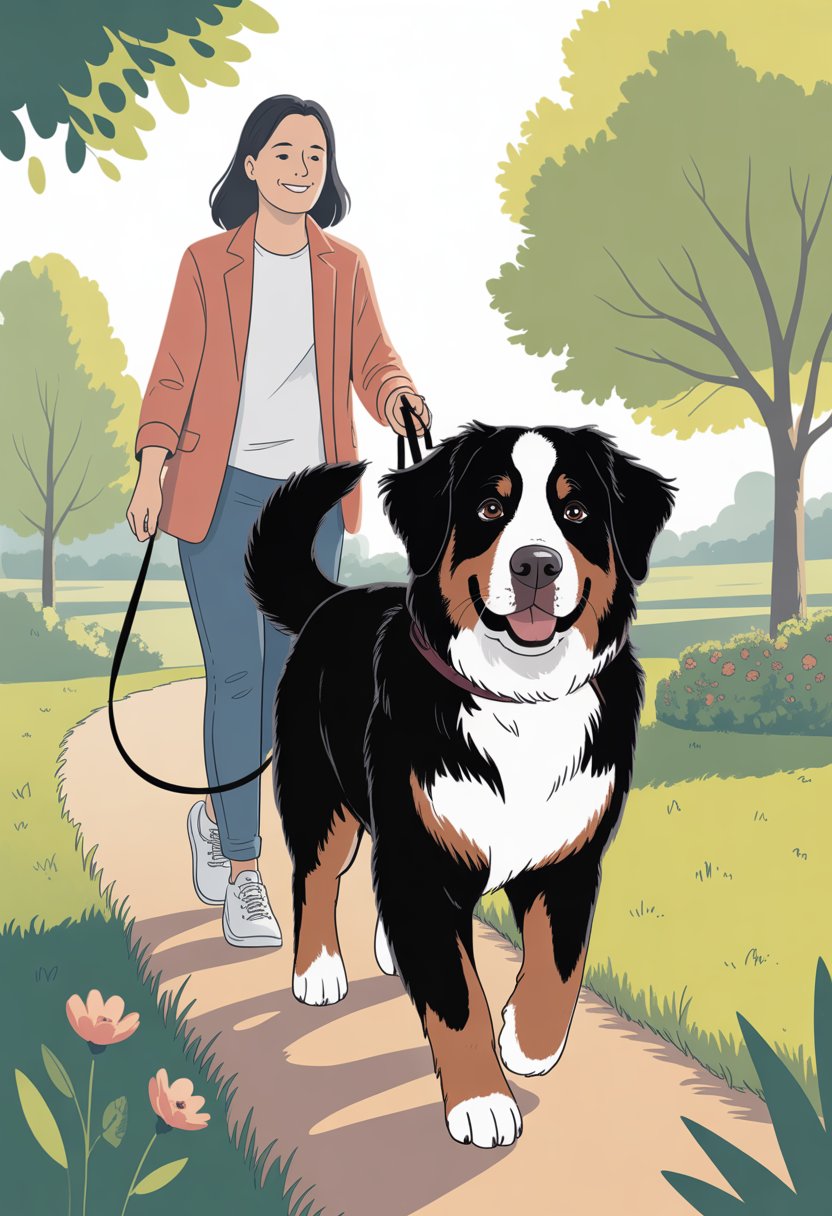
When you bring your Bernese Mountain Dog to a new place, take it slow. Too much noise, movement, or new smells at once can make your dog nervous.
A calm start helps them feel more secure. Begin with quiet spots like a friend’s backyard or a calm park.
Once your dog seems relaxed, you can slowly add busier places like sidewalks or pet-friendly stores. Use treats, toys, or praise to reward calm behavior.
If your dog shows stress, give them space and try again later. Pushing too fast just makes anxiety worse.
Each dog adjusts at a different pace. Let your Berner set the speed.
Practice basic commands daily to boost your dog’s sense of accomplishment
When you practice simple commands like sit, stay, or come every day, your Bernese Mountain Dog gets a chance to succeed. Each time your dog follows through, they feel more confident and secure.
Keep training sessions short. A few minutes at a time is enough to keep your dog engaged.
Use positive reinforcement, like treats or praise, to reward good behavior. This helps your dog connect the command with something enjoyable.
Repeating these exercises daily builds routine. Your dog learns what to expect, which can lower anxiety.
Even practicing one or two commands can make a difference. Consistency and patience matter more than perfection.
Engage in interactive play sessions to stimulate their mind and body
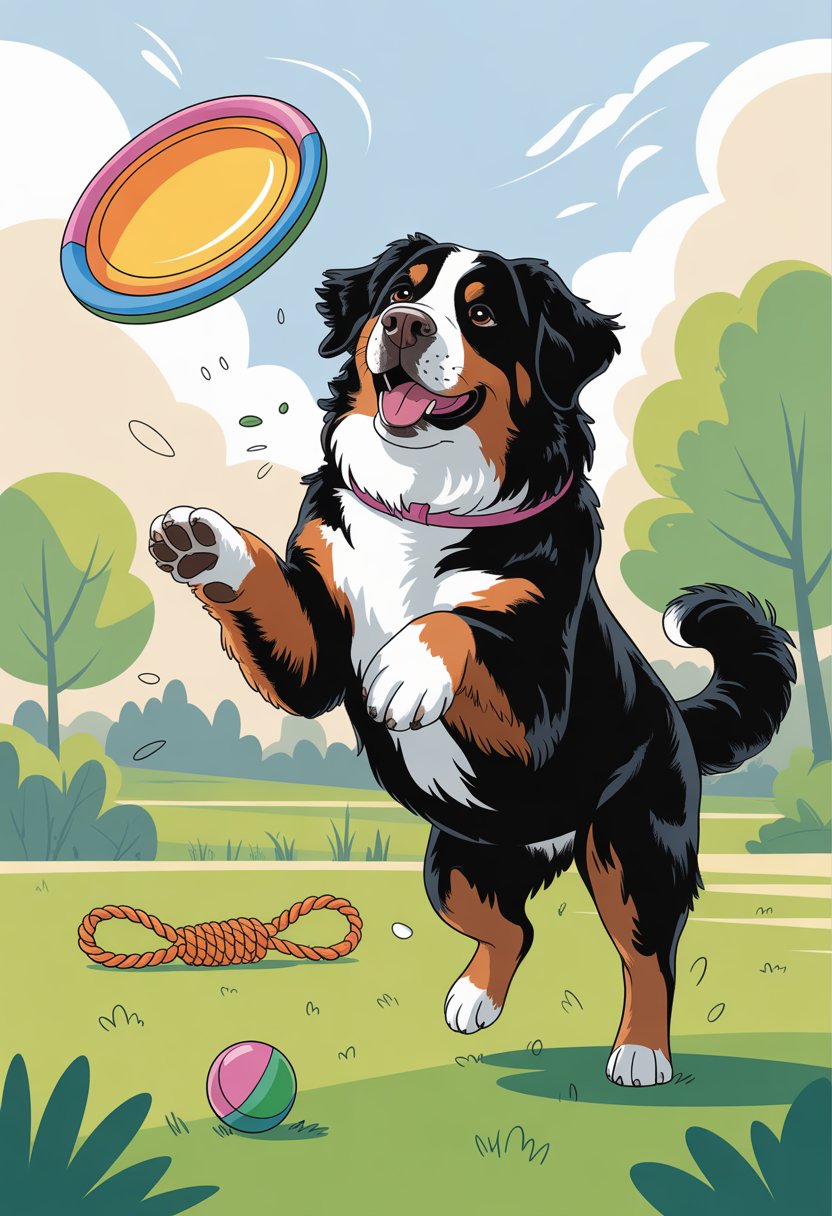
Your Bernese Mountain Dog needs more than just a walk around the block. Interactive play keeps them active and gives them a chance to think.
This helps build confidence because they learn new skills and get positive feedback from you. You can use simple games like fetch, tug-of-war, or hide-and-seek with toys.
These activities encourage your dog to move, explore, and make choices. That supports both mental and physical growth.
Puzzle toys or treat-dispensing games also work well. They give your dog a challenge and reward them for figuring it out.
Playtime strengthens your bond. When your dog sees you as a fun and supportive partner, they feel more secure and willing to try new things.
Create a consistent routine that helps your dog feel secure and confident
Your Bernese Mountain Dog feels more relaxed when life is predictable. A steady routine for meals, walks, and rest helps your dog know what to expect each day.
Try feeding your dog at the same times each morning and evening. Regular walk times give your dog a sense of structure.
Over time, this rhythm makes your dog more comfortable and less anxious. Don’t forget to include play and training sessions in the schedule.
Even short, daily activities give your dog mental stimulation and a chance to practice new skills. This adds variety without breaking the routine.
Stick to consistent bedtime and wake-up times too. Dogs notice when their day starts and ends the same way, and it helps them feel safe.
Enroll in a local obedience class for structured socialization and training
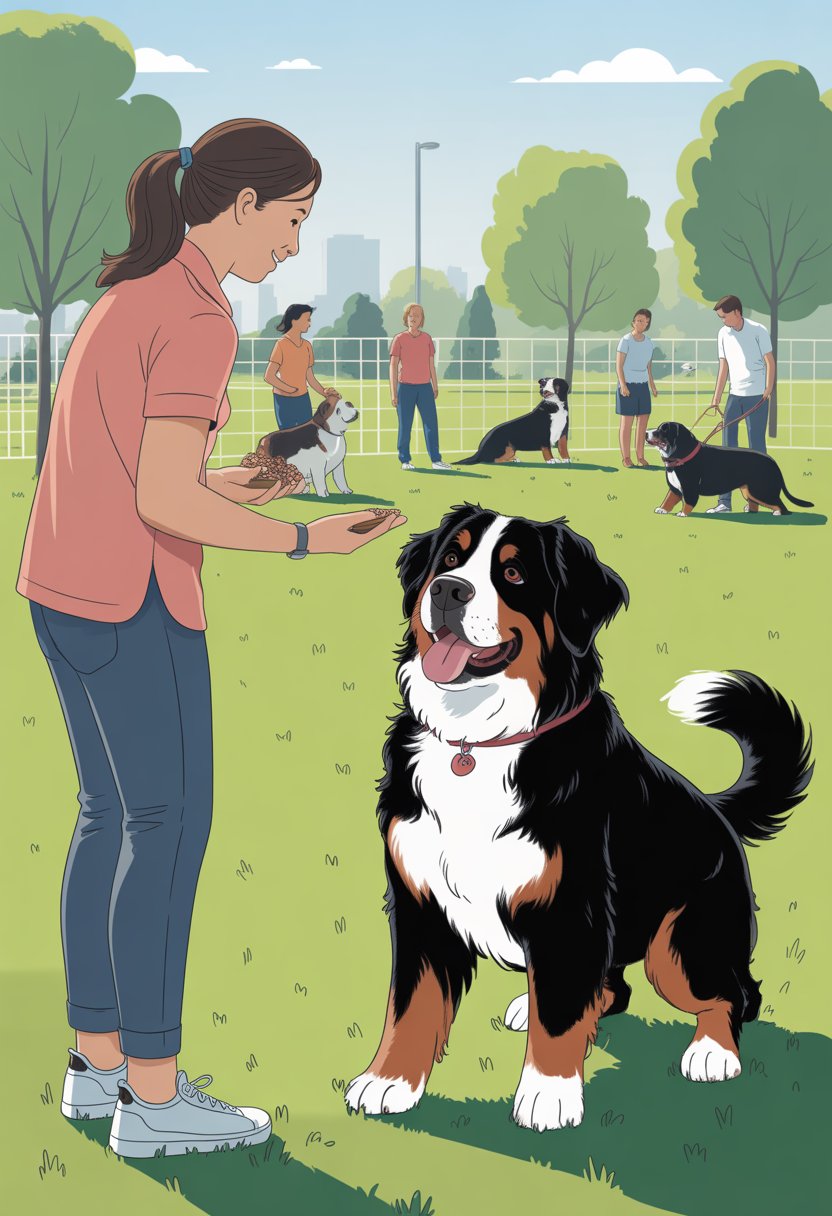
Taking your Bernese Mountain Dog to an obedience class gives them a safe place to learn and practice new skills. The structured setting keeps training consistent.
In class, your dog meets other dogs and people in a controlled environment. This kind of socialization helps your Bernese feel more comfortable around strangers.
Professional trainers guide the sessions, so you don’t have to figure everything out on your own. They show you how to handle common challenges like pulling on the leash or ignoring commands.
Classes give you regular practice time, which builds your dog’s confidence through repetition and positive feedback. With steady progress, your Bernese will start to trust their abilities and rely on your guidance.
Joining a group class also adds variety to your dog’s routine. The new sights, sounds, and experiences keep training interesting.
Provide safe chew toys to relieve stress and build independence
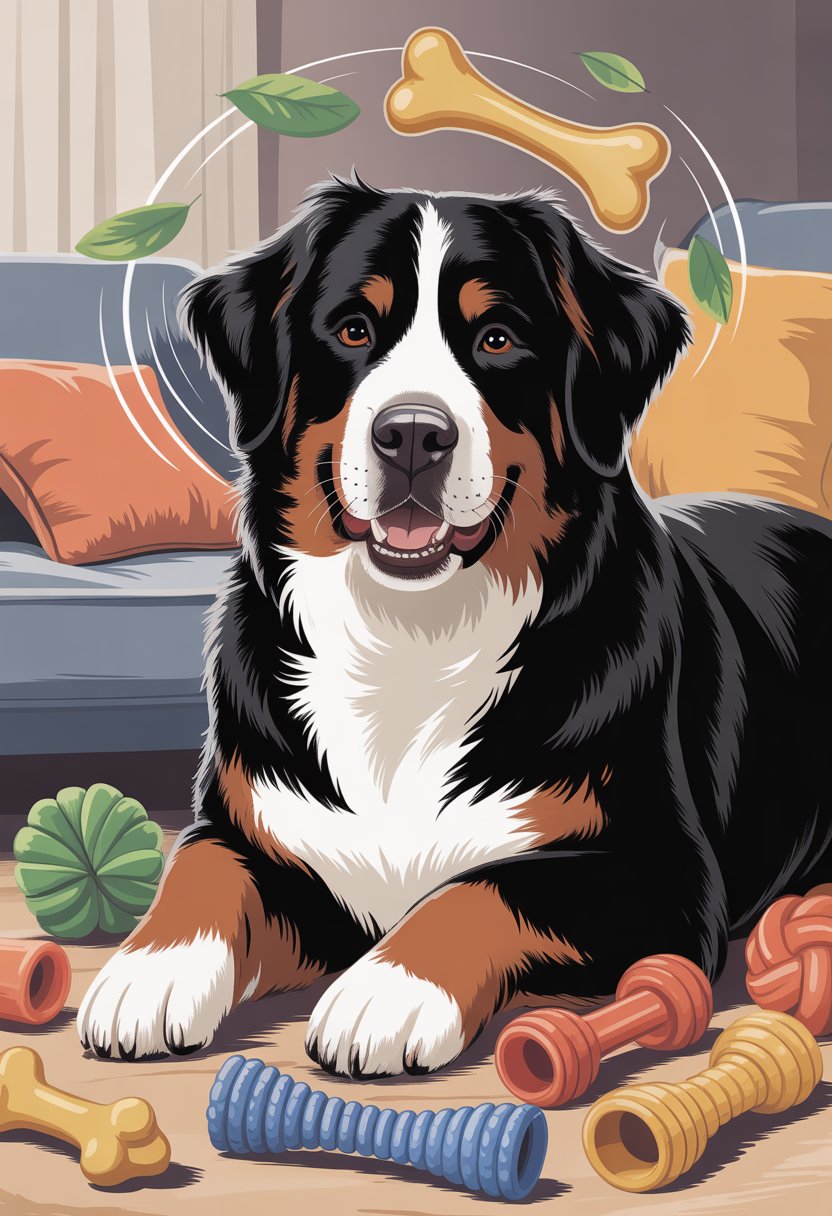
Your Bernese Mountain Dog has a natural urge to chew, and giving them safe toys helps meet that need in a positive way. Chew toys calm your dog and keep them from chewing on furniture or shoes.
Look for toys made from strong materials like rubber or nylon. Avoid items that break apart easily, since small pieces can be unsafe.
Chew toys also give your dog something to do when you’re busy. This helps them feel more independent and less reliant on constant attention.
Rotating different toys keeps your Bernese interested and prevents boredom. Having a variety of textures and shapes makes chewing more fun.
By offering safe chew toys, you give your dog a healthy outlet for energy and a way to relax on their own.
Understanding Your Bernese Mountain Dog’s Personality
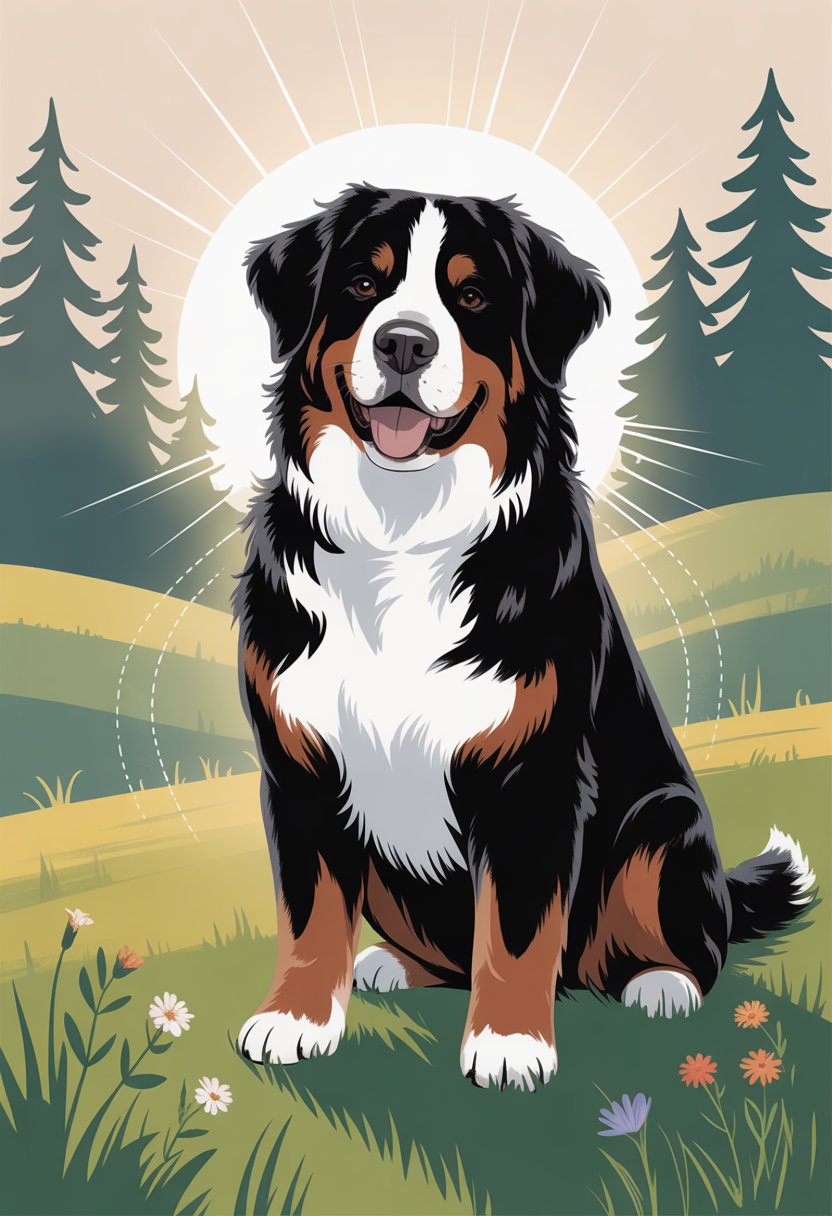
Your Bernese Mountain Dog has a gentle and loyal nature. Their size and sensitivity can sometimes make them unsure in new situations.
Their confidence depends on how well you understand their temperament and respond to their needs.
Common Confidence Challenges
Bernese Mountain Dogs are affectionate and eager to please, but their soft temperament can make them cautious. Loud noises or unfamiliar people may cause nervous behavior.
Because of their strong bond with family, they may struggle with separation. When left alone too long, they can become anxious or withdrawn.
Another challenge comes from their size. Even though they’re large, they don’t always feel brave.
A new environment or a pushy dog at the park may overwhelm them. They often need reassurance and steady guidance to feel safe.
To help them, you’ll want to spot the signs early. Look for lowered ears, tucked tail, or hesitation to approach.
Traits That Influence Confidence
Several personality traits play a role in how your Bernese Mountain Dog handles the world. They’re naturally gentle, social, and sensitive, which makes them loving but also more likely to feel uneasy in stressful settings.
Their intelligence is another key factor. They pick up on your tone and body language quickly, so your calm and steady reactions help them stay relaxed.
On the other hand, harsh corrections may lower their trust and confidence. They usually feel more secure when included in daily routines.
Simple things like joining you on walks or being in the same room while you work can build their assurance. Their playful side helps balance their cautious nature.
Encouraging games, training sessions, and positive interactions gives them both mental stimulation and a safe way to practice being more confident.
How Training Methods Impact Confidence
The way you train your Bernese Mountain Dog shapes how secure and comfortable they feel. Gentle methods encourage them to try new things.
Harsh or inconsistent training can make them anxious or unsure. That’s not really what anyone wants for their dog, right?
Positive Reinforcement Strategies
When you reward good behavior, your dog connects learning with something positive. Treats, praise, or playtime help them feel proud of their progress.
This makes them more willing to repeat the behavior. If they mess up, they’re still likely to try again.
Keep sessions short and consistent. Long sessions just overwhelm your Berner.
Five to ten minutes of focused practice works best. Try to end on a success so your dog leaves the session feeling confident.
A simple table can help you plan rewards:
| Behavior | Reward Example |
|---|---|
| Sitting on command | Small treat |
| Calmly greeting a guest | Verbal praise |
| Walking without pulling | Extra playtime |
If you use positive reinforcement, you build a safe space where your dog feels motivated to learn. It’s about encouragement, not fear.
Building Trust During Training
Trust grows when your dog knows what to expect from you. If you stay calm and consistent, your Berner learns to see you as a reliable guide.
This trust makes them more likely to follow your lead in new or stressful situations. Avoid punishment or yelling, since that can really damage your bond.
Instead, redirect unwanted behavior and show them what you want instead.
You can also build trust by mixing training with bonding activities. For example:
- Practice commands during a walk.
- Use gentle grooming sessions as training time.
- Add short play breaks between lessons.
Let’s be honest, when your dog feels safe and supported, they’ll approach training with a lot more confidence—and maybe even a little excitement.

